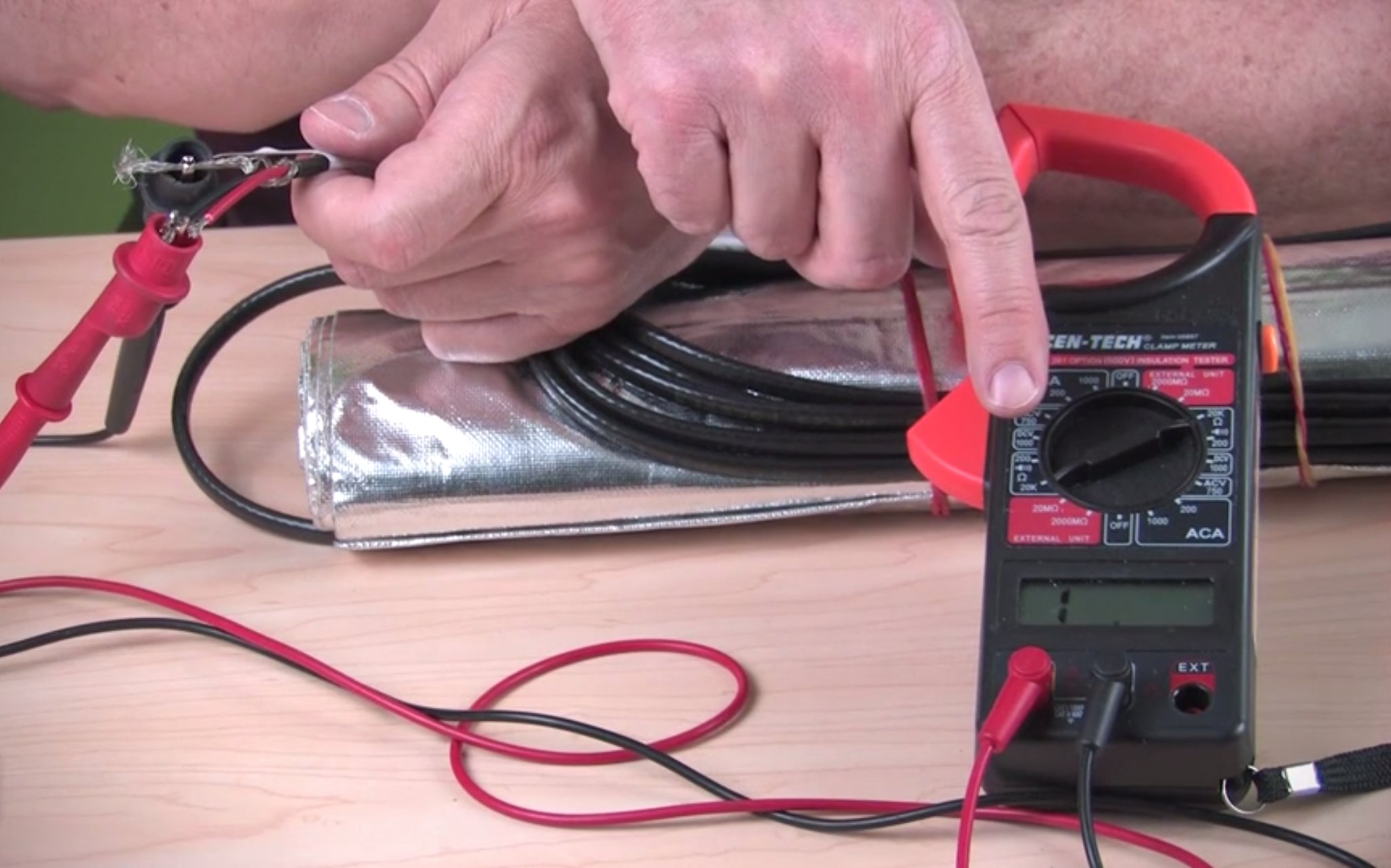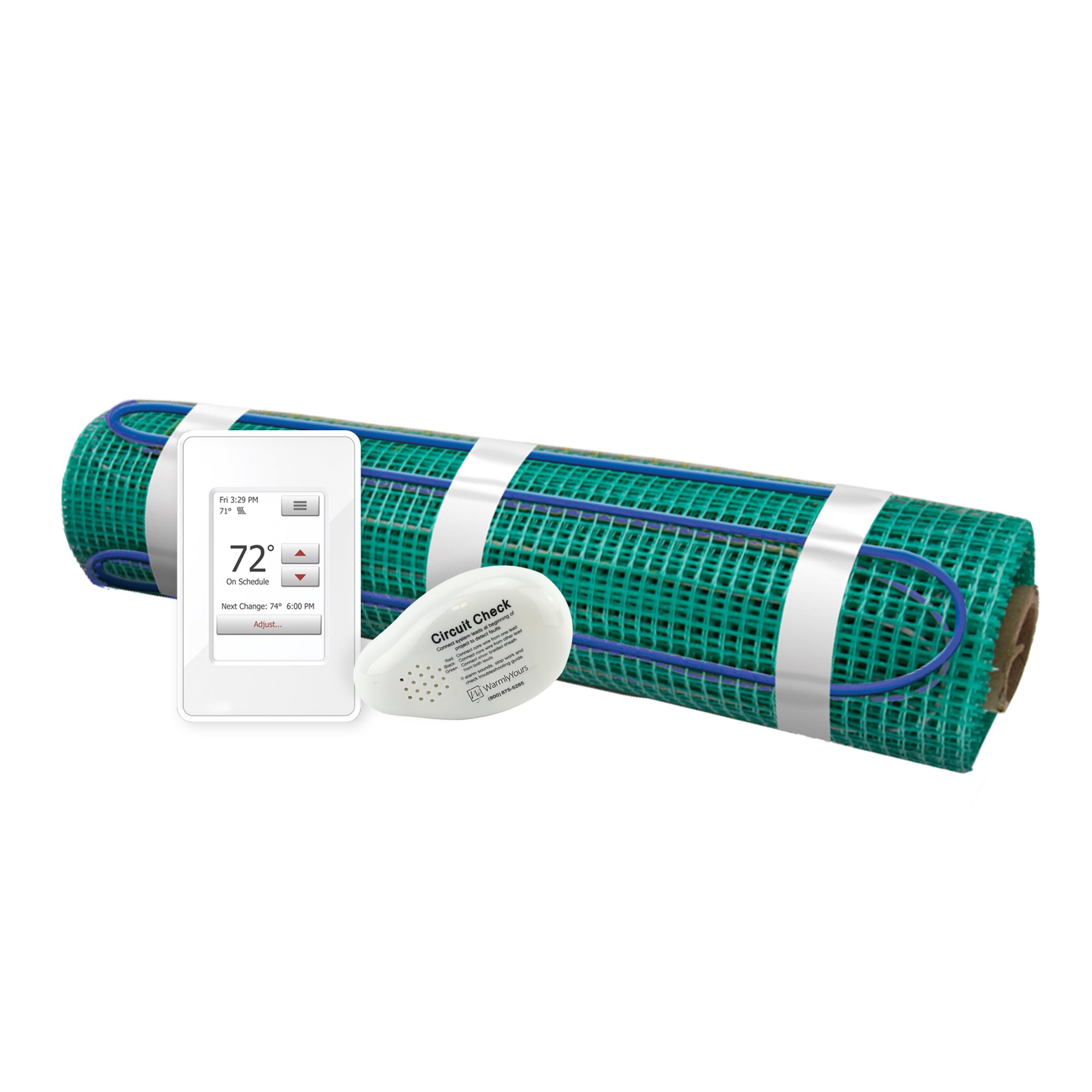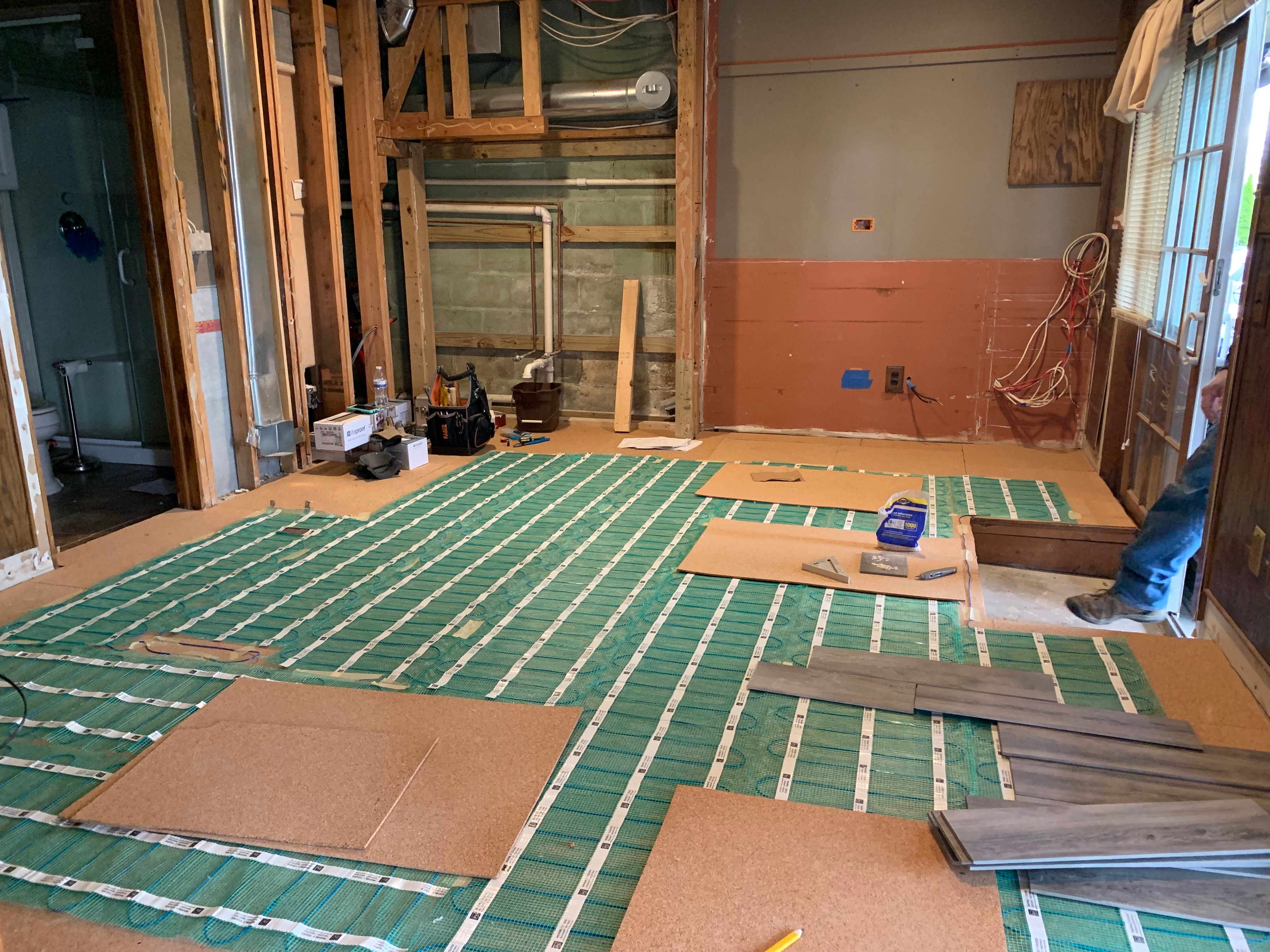
In high school physics class, while you were daydreaming or carving your initials into your desk, the teacher was probably explaining the ins and outs of Ohm’s Law. I wasn’t paying attention either. I thought to myself “I’ll never need to know this—let alone have to apply it to anything!” I was wrong. As it turns out, Ohm’s Law is the glue that holds electric floor heating together.

Ohm’s Law is one of the most important and basic laws governing electrical circuits. It demonstrates the relationship between voltage, amperage, and a circuit’s resistance. It is commonly described by this simple formula:
I = V/R
The I stands for Intensity or current in amps. The V represents voltage, and the R represents a circuit’s resistance. This formula could also be expressed in the following ways:
V = I x R and R= I/V
This formula is inherent in the engineering of floor heating cables – it is the math that warms your floor. When voltage is applied to a resistant cable, it will create amperage. By extension, multiplying the voltage by the amperage will combine to create wattage (heat). Wattage is a representation of the energy released by a given circuit.

Let’s take a look at the math that goes into a Warmly Yours TempZone Flex Roll. For our purposes, I’ve chosen a 120 VAC, twin-conductor TempZone Flex Roll with 1.5’ by 4’ dimensions. This roll will cover 6 square feet of floor space and will generate 90 watts. 90 watts divided by those six feet will give us 15 watts per square foot. The ohms value of this circuit is 160 ohms, and will draw about .75 amps. If we plug these numbers into the Ohms Law formula, we can see how these numbers relate.
.75 = 120 divided by 160 or stated, amperage is equal to voltage divided by resistance
or
120 = .75 x 160 or stated, voltage is equal to amperage multiplied by resistance
or
160 = 120 divided by .75 or stated, resistance is equal to voltage divided by amperage.
Wattage can be figured then by taking the voltage and multiplying it by the amperage. In this case, 120 VAC multiplied by .75 amps will yield 90 watts.
When it comes to troubleshooting our systems, we will take a look at the circuit from the perspective of Ohm’s Law. This is because if any of the components are altered, the rest of the system will be “out of whack” (not the most technical term) We’ll start with an Ohmmeter and take a reading on the floor circuit. If we get an open reading, or “0”, we can plug that value into the equation. What we see is that zero will reduce all the other values to zero, meaning there will be no amps, or volts, and subsequently no wattage (heat). Resistance is very important.
What happens if a mat is shortened? We get this question a lot. We can never recommend this course of action, and here are the mathematics behind it. When you shorten a circuit, you change or lower the resistance, and this, of course, will affect the other values in the equation.

Let’s use the values from the 4’ TempZone roll and see how they change when the roll is shortened. Let’s pretend the installer shortened the roll by 20% in order to try and fit it in a smaller area. The resistance value for the mat is normally 160 Ohms and if 20% of the resistance is removed we’ll have a resistance value of 128 Ohms. This will affect the amperage draw and wattage output. The voltage will remain at 120 VAC because that is what is available to the circuit from the house power. Let’s take a look.
If we divide the voltage (120) by the resistance (128) the new amperage draw would be .94. if we take the amps (.94) and multiply it by 120 volts, we get the new wattage of this circuit at 112.8 watts. In short, lowering the resistance will drive up the wattage and amperage. Also, since we are looking at 20% less square footage (4.8 now, down from 6) by shortening the mat, the wattage per square foot will have changed as well. The wattage per square foot will be well above the allowable wattage of 15 watts at 23.5 watts per square foot, making this mat non- compliant to code. In addition to violating NEC code, the wire is now under stress from the additional wattage and amperage, and is likely to fail. We cannot warranty a mat that has been altered in this way.
Let’s take that same mat in its original condition. What happens to that mat if we double the voltage? This will sometimes happen when an assumption is made that the floor heating requires a 240 VAC supply. If we take the voltage (240 now) and divide it by the resistance (160 ohms), we get an amperage draw of 1.5. Multiplying the amps by the voltage, we’ll arrive at 360 watts. The mat is capable of covering 6 square feet, dividing 360 by that 6 square feet will yield 60 watts per square feet. This is 4 times more than what is allowed per square foot wattage. The wire will not last long at this increased voltage.
If you have any additional questions about Ohm’s Law, or radiant heating in general, post them below in the comments and we’ll find you some answers.
Have Questions About Your Project?
Our team of Radiant Experts is ready to help!
Comments
Stay Updated
Get the latest radiant heating news and tips delivered to your inbox.



How do you repair a cable that was supplied 240VAC but the cable was rated for 120VAC?
That's a great question. It is likely that the higher voltage (240V) damaged a section of the 120V-rated cable. This section will need to be located and replaced with a splice. We rent out a Thermal Camera (SKU: THERM-CAM-5) and Troubleshooting Kit (SKU: TBS-KIT) that can be rented and our 24/7 technical support team can help answer any questions you might have if you give us a call at 1-800-875-5285). Hope that helps!